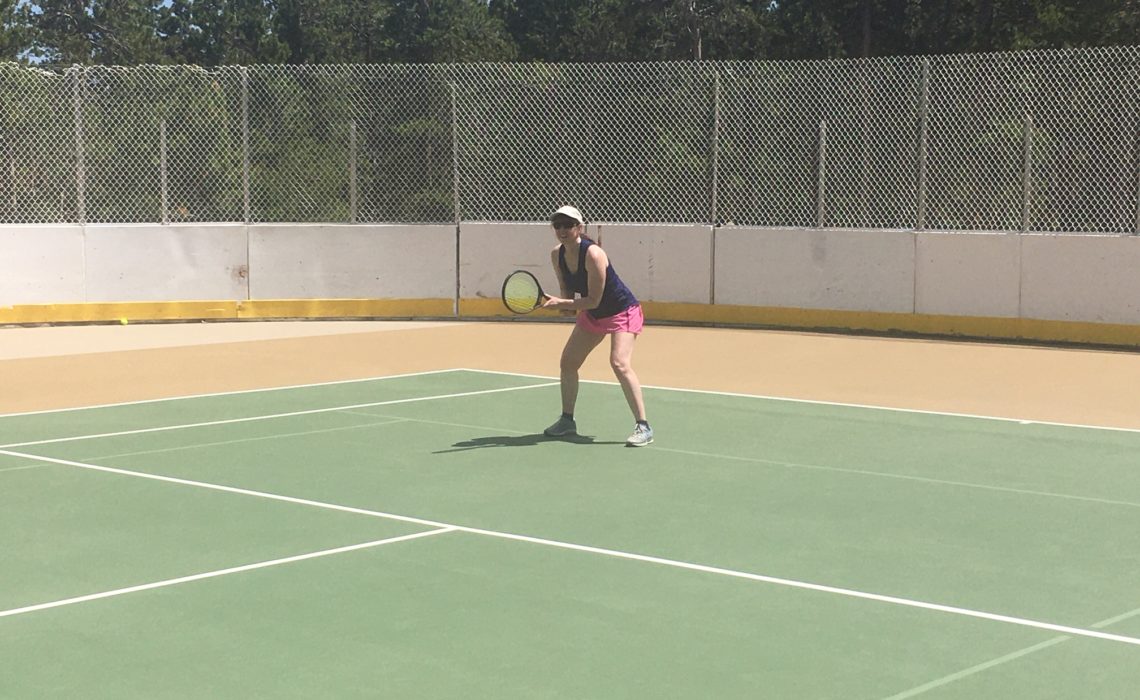
Growing up in Missouri, I learned to play tennis as a young girl. I got a lot of satisfaction over learning how to hit the ball with spin, and developing a killer serve. Tennis provided a different kind of competition and exercise, one filled with stops and starts, and finesse.
Through the years as an adult, I continued to play recreationally with friends and family. But upon moving to Nederland, we put our tennis rackets away in a closet, in favor of biking and hiking.
During the era of the Coronavirus pandemic, I’ve become more reluctant to hike my favorite trails. It seems the warmer weather has brought droves of “flatlanders” from Boulder and Denver. Confronting crowds makes me feel more anxious and conflicted.
While I’m a big proponent of wearing a mask, it can feel suffocating as you’re breathing hard, while climbing up steep trails. What do you do when you confront someone coming the other way on a narrow, single-track trail? I can pull on my mask and take my chances. Or, I can pull off the trail to put the requisite six feet of distance between us. But then the Park Ranger in me feels guilty. I’m trampling vegetation off the trail, and helping create social trails — a big no-no for Leave No Trace proponents.
Enter a foray back into tennis. Tennis seemed like a great way to recreate with social distancing built in. The risk feels minimal when the game is designed to put each person far apart on either side of the net. With each of you one side of the net, social distance is natural to tennis. For extra precaution, you can mark your own tennis balls and have you partner mark theirs.
I knew Nederland had tennis courts, so my husband and I hatched a plan to give it a try after ten years on the sidelines. We had a can of tennis balls we’d never opened. But, when we stopped at the local Target, and decided to pick up an extra can of balls, we found “high altitude” tennis balls.
What are high altitude tennis balls? What would happen if we just played with the ones we had — the non “high altitude” balls?
Knowing a friend of mine played regularly, I emailed him.
“What kind of balls should we use? I see pressureless balls, high altitude balls. We have a can of balls we never used from Maryland, can’t I use those? I’m so confused!”
“You definitely want to play with the high altitude balls, Leslie. Otherwise, the ball will be bouncing over your head and it will go way faster. You’ll also end up hitting the ball over the fence if you’re not careful.”
With this in mind, we headed to the tennis courts on a sunny Friday afternoon. No one else was there. We cracked open our new can of “high altitude” balls.
I shouldn’t have worried about the balls. Hitting the ball felt the same as it did when I lived back east. I should have worried about sprinting around a tennis court at 8,500 feet.
The hitting came back pretty quickly. As expected, a lot of balls were hit out and into the net. But as we kept playing, we got better at keeping the ball in the court. That’s where I found out the true challenge of playing tennis at high altitude.
After hitting about three shots each, Bryon hit a ball in the corner. Wanting to try and get it back, I sprinted as hard as I could, waving at the ball and missing it.
I felt like my lungs were exploding. I doubled over, putting my hands on my knees.
“I’ve got to catch my breath — I’m dying!”
And so the day went. Every time we got a rally going, I felt like I was going to pass out. This despite my getting in my 10,000 steps each day, hiking with the dogs and weight training at our house.
After playing an entire set, I was done. My face had turned beat red. My heart pounded against my chest. I had to sit on the bench for five minutes before grabbing out stuff and heading for the car.
In my quest to find recreation safe from the spread of Coronavirus, I’d found much more.
A new kind of workout high in the mountains of Colorado.

